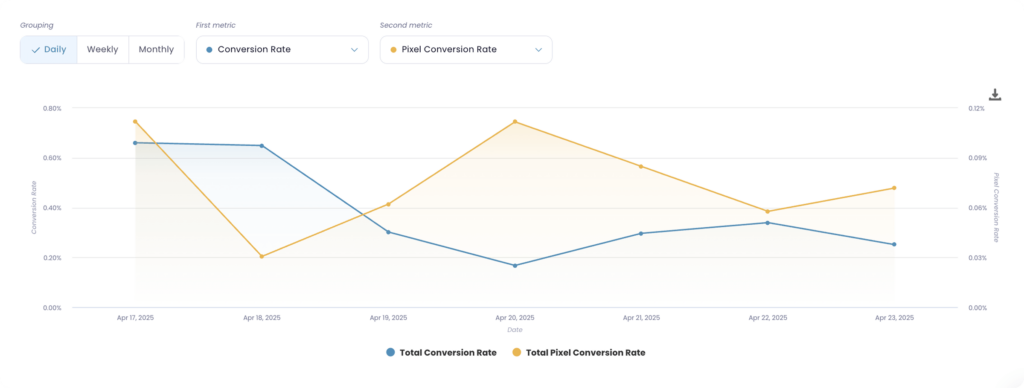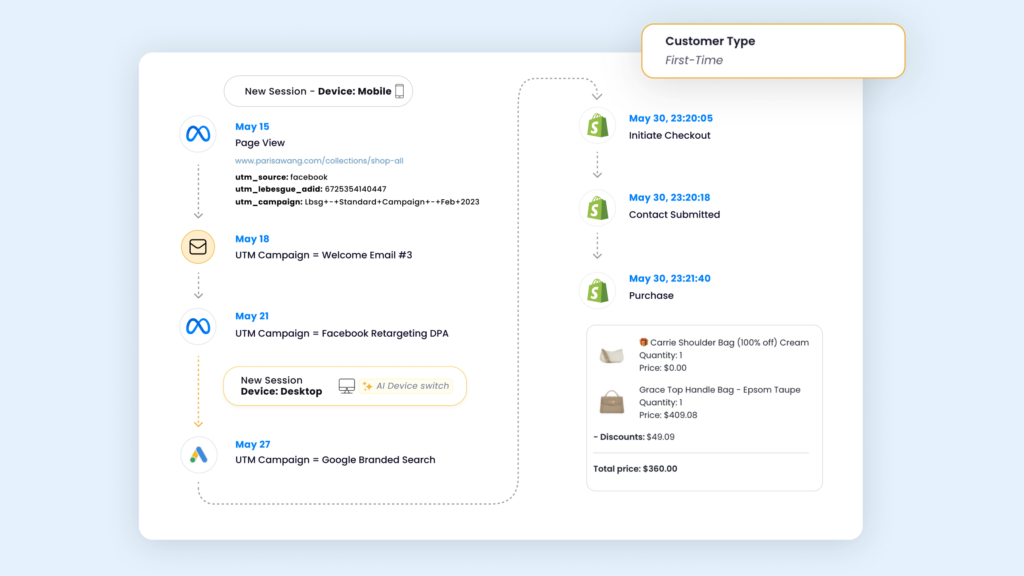Running a Shopify store is a hustle. You’re juggling products, marketing, customer service… But what if you could get more sales from the traffic you already have? That’s where understanding shopper psychology comes in, and the MECLABS formula is a brilliant guide.
Your Shopify Sales Stuck? Let's Audit with the MECLABS Formula.
Alright Shopify brand owners, let’s talk turkey. You’ve got a great store, awesome products. But are you getting all the sales you could be? If things feel a bit stuck, or you just know there’s more potential, it’s time to look under the hood. There’s a powerful way to think about this called the MECLABS Conversion Formula.
This MECLABS formula isn’t some dusty academic theory. It’s a practical thinking tool that can help you pinpoint exactly where your Shopify store can improve to turn more visitors into paying customers. Let’s get specific.
First, What is This MECLABS Formula Thing?
Imagine you have a checklist designed by super-smart marketers and researchers. That’s kind of what this is. MECLABS Institute spent years figuring out what really makes people click “buy.”
The formula looks like this: C = 4M + 3V + 2(I-F) – 2A
- C is your Conversion Rate – the percentage of visitors who actually buy something from your Shopify store.
- The letters on the other side are the levers you can pull.
This isn’t about plugging numbers into a spreadsheet. It’s about using each part of the formula to examine your online store with fresh eyes.

Breaking Down the Code: Your Shopify Audit Checklist
Let’s go through each element with a clear focus on your Shopify brand and how you can apply it.
- M is for Motivation (4M): Why Are Shoppers Really on Your Site? This is the heavyweight champ of the formula. If people landing on your store aren’t already motivated to look for products like yours, everything else is an uphill battle.
- Your Shopify Audit – Motivation:
- Who is your ideal customer? Really picture them. What problem is so painful they’re actively searching for a solution you offer? What’s their biggest desire your product fulfills?
- What makes them shop today? Is it a specific event, a seasonal need, a sudden problem?
- Action Tip: Message Mining. Dive into your customer reviews (the good and the bad). What exact words and phrases do they use to describe their needs and how your product helped? Check forums, social media comments. This is gold. You can also send short surveys to recent buyers asking what triggered their purchase.
- Your Shopify Audit – Motivation:
- V is for Value Proposition (3V): Why Your Shopify Store Over All Others? This is your answer to: “There are a million online stores. Why should I spend my money right here, right now, on your Shopify site?” This is about being clear, unique, and trustworthy.
- Your Shopify Audit – Value Proposition:
- Appeal: Look at your product pages. Do the images, descriptions, and overall vibe make your target customer go, “Wow, I want that!”?
- Exclusivity: What’s your “only-factor”? Can shoppers get your exact products, your unique brand experience, or your level of expertise somewhere else easily (like on Amazon)? If so, why would they choose you? Your “only-factor” might be unique designs, sustainable sourcing, a vibrant community you’ve built, or incredible niche expertise.
- Credibility: Do shoppers trust you instantly? Are customer testimonials and reviews easy to find and genuine-looking? Does your “About Us” page tell a real story? Is your site professional and error-free?
- Clarity: Can a new visitor understand exactly what you sell and why it’s special within about 5 seconds of landing on any page? Is your unique selling point obvious on your homepage, product pages, and even in your ads?
- Your Shopify Audit – Value Proposition:
- I is for Incentive (2I): Sweetening the Deal on Your Store Incentives are the little extras that can tip the scales, especially if your products are similar to competitors or if shoppers are price-sensitive.
- Your Shopify Audit – Incentives:
- Are your incentives strategic? A “10% off for new email subscribers” helps build your list. “Free shipping when you spend $XX” encourages larger orders. A limited-time flash sale can create urgency.
- Do they add real value? A tiny discount on a high-priced item might not move the needle.
- Are you overdoing it? Too many discounts all the time can make your brand look cheap and train customers to wait for sales. Use them wisely.
- Your Shopify Audit – Incentives:
- F is for Friction (2F): What’s Making Shopping on Your Site a Pain? Friction is anything that makes the buying process annoying, difficult, or slow. Every bit of friction is a chance for a shopper to give up and go elsewhere.
- Your Shopify Friction Audit – To-Do List:
- Test Page Load Speed: Use Google’s PageSpeed Insights. If your product pages or checkout are slow, you’re losing sales. Period.
- Walk Through Your Checkout (Especially on Mobile!): Try to buy something from your own store using a phone. Is it smooth? How many steps? Is it easy to enter info?
- Count the Clicks: How many clicks does it take from a product page to a completed order? Aim for as few as sensibly possible.
- Guest Checkout Option? Forcing people to create an account before they buy is a major friction point. Always offer guest checkout.
- Simplify Your Forms: Only ask for the information you absolutely need to process the order.
- Check Site Navigation: Is it easy for people to find product categories? Is your search bar effective? Are filters helpful on collection pages?
- Pop-Up Review: Are your pop-ups (for email sign-ups, etc.) helpful or just getting in the way of shopping? Timing and placement are key.
- Broken Links & Errors: Regularly check for any broken links or error messages on your site.
- Your Shopify Friction Audit – To-Do List:

Putting the Formula to Work on Your Shopify Journey
Think about the path a customer takes on your Shopify store. It’s not one big decision; it’s a series of smaller “micro-yes” decisions:
- They see your ad/social post. (Is the value clear enough for a click? Micro-Yes 1)
- They land on your product page. (Does it meet their motivation and show value? Micro-Yes 2)
- They consider adding to cart. (Is the info sufficient? Anxiety low? Micro-Yes 3)
- They start checkout. (Is it simple? Friction low? Micro-Yes 4)
- They change the device (oops, we lost track of them – this is where Le Pixel can help, check it out – it tracks & stores the entire conversion journey).
- They complete payment. (Do they trust you? The Macro-Yes!)

Knowing the formula is great. Applying it is where the magic happens for your Shopify store. Think about every step a customer takes on your site as a “micro-yes.” From landing on a product page, to clicking “Add to Cart,” to starting the checkout – each is a small decision. Your goal is to make saying “yes” at each point super easy.
Online shoppers get hit with a ton of information. Don’t overwhelm them on your Shopify site. Keep your navigation clear. Make your product categories logical. Write concise, benefit-driven product descriptions. Ensure your calls to action (“Shop Now,” “Add to Cart,” “Checkout”) are obvious and compelling. For Shopify store owners, simplicity and clarity are your best friends.
Your Next Steps: From Audit to Action
This MECLABS formula is your roadmap. Go through these audit points for your own Shopify store. Be honest. Where are you strong? Where are the hidden roadblocks? Addressing even a few of these areas, guided by understanding what truly motivates your customers and what causes them to hesitate, can make a real difference to your bottom line.
Lebesgue can also help with this. Using our app, you can check what is the industry CR and what is your opportunity if you increase it, so we can actually show our brands in which funnel stages they can implement the MECLABS formula. Also, Henry AI, our AI chat assistant will be able to tell you exactly how to utilize the MECLABS formula for your brand.
Shapley values are a game-changer for a few simple reasons. They offer a fair way to see what’s working. They understand that marketing channels don’t work alone; they team up. This helps you make smarter plans, spend your budget wisely, and get better results. It’s about knowing the true impact of every part of your marketing.
While they can need a good amount of data and computer power, the insights they give are often worth it because they take the guesswork out of understanding your marketing.
They help you give credit fairly and see how all your efforts contribute to your goals. By knowing what truly works, you can fine-tune your strategy and make your marketing even better.
MECLABS Formula FAQ'S
What’s the MECLABS formula for my Shopify store?
It’s a thinking guide (C = 4M + 3V + 2(I-F) – 2A) to help you find out why shoppers buy (or don’t buy) from your online store. It helps you look at Motivation, Value, Incentive, Friction, and Anxiety.
How do I figure out shopper “Motivation” (M) for my Shopify products?
Ask what deep need or desire your product solves. Check customer reviews for their exact words and reasons for buying.
What’s a strong “Value Proposition” (V) for a Shopify brand?
It’s the clear, unique reason customers should buy from your store, not a competitor or Amazon. This could be unique products, amazing brand story, or standout customer service.
What are common “Friction” (F) points on a Shopify site?
Slow page loading, a long or confusing checkout, forcing account creation, or a bad mobile experience are all common friction points for online stores.
How can my Shopify store reduce shopper “Anxiety” (A)?
Show trust seals, have a very clear return policy, use high-quality product photos and detailed descriptions, display genuine customer reviews, and make your contact info easy to find.



